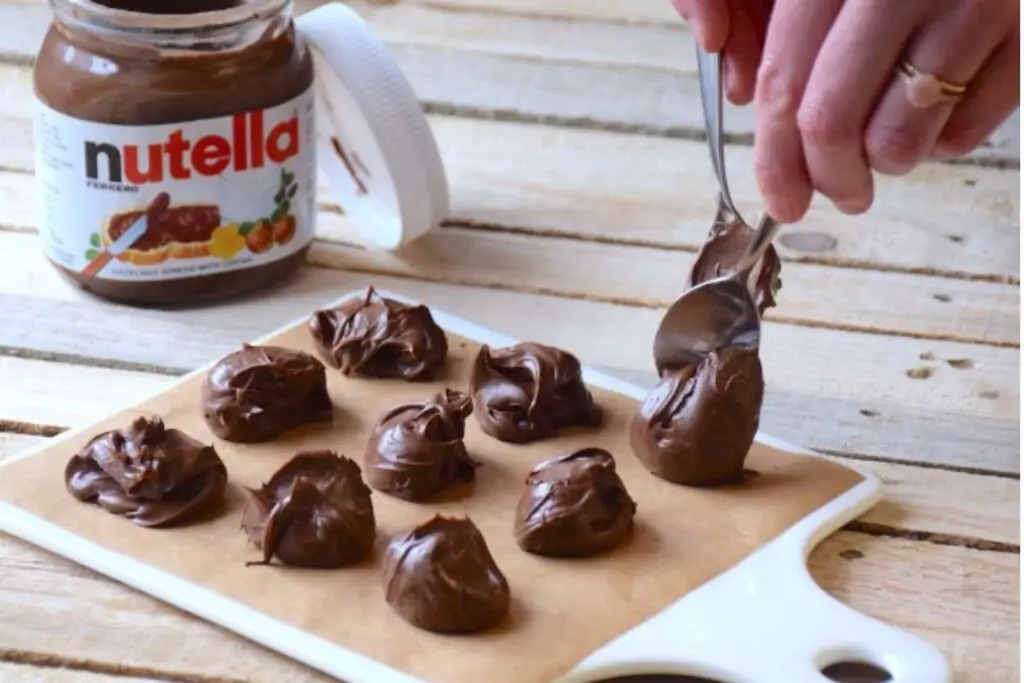
Sauces are a crucial component of many culinary creations, adding flavor, depth, and complexity to dishes. Whether it’s a rich tomato sauce, a velvety béchamel, or a zesty pesto, sauces can elevate a meal to new heights. Freezing sauces can be a convenient way to preserve their freshness and ensure that you always have a delicious accompaniment ready, even when your schedule gets busy. By following these simple steps, you can freeze sauces while maintaining their original taste and texture. This article presents a comprehensive approach to freezing sauces effectively, guaranteeing that your future culinary endeavors are filled with flavor.
Here’s a comprehensive guide on how to freeze sauces:
Step 1: Prepare the sauce
To begin the process of freezing sauces, it’s crucial to ensure that the sauce you’re working with is prepared and cooked to perfection. The quality of the sauce before freezing directly impacts its taste and texture once thawed and reheated. Whether you’re dealing with a homemade masterpiece or leftover sauce from a previous culinary adventure, taking the time to evaluate its flavor and consistency will pay off in the long run.
If you’re making the sauce from scratch, pay close attention to the cooking process. Use fresh and high-quality ingredients to achieve the best possible taste. Whether it’s a savory tomato-based sauce, a creamy Alfredo, or a vibrant pesto, the initial preparation sets the foundation for the frozen version.
In the case of leftover sauce, assess its condition before proceeding. Check for any signs of spoilage, such as an off smell or unusual appearance. If the sauce seems questionable, it’s better to err on the side of caution and discard it rather than risking the safety of your frozen meals.
Furthermore, consider seasoning your sauce slightly on the stronger side before freezing. Freezing can dull flavors, so a slightly more intense taste in the original sauce will help it remain flavorful even after thawing and reheating.
Step 2: Allow the sauce to cool
As you progress through the process of freezing sauces, a critical step that should not be overlooked is allowing your freshly prepared sauce to cool down to room temperature before freezing. This seemingly simple act plays a crucial role in maintaining the integrity of your sauce during the freezing and thawing processes.
When sauces are heated, the moisture within them turns into steam. Placing hot sauce directly into the freezer can lead to the formation of condensation as the steam cools rapidly. This condensation can result in the formation of ice crystals on the surface of the sauce or within its structure. As these ice crystals form and melt during thawing, they can alter the sauce’s texture and dilute its flavors, potentially compromising the quality of your culinary creation.
By allowing the sauce to cool to room temperature before freezing, you’re minimizing the risk of condensation formation. Cooling the sauce gradually also gives it time to release excess moisture, which can further contribute to maintaining the sauce’s original consistency and taste.
To ensure optimal results, follow these steps when cooling your sauce:
- Turn Off the Heat: Once your sauce is fully cooked and seasoned to perfection, remove it from the heat source. This step halts the cooking process and prevents further steam generation.
- Use a Wide Container: Transfer the sauce to a wide, shallow container. A wider surface area allows the sauce to cool more rapidly.
- Stir Occasionally: Gently stir the sauce occasionally as it cools. This aids in the even distribution of heat, preventing any localized hot spots that could lead to excess steam generation.
- Cover with a Lid or Plastic Wrap: Cover the container with a lid or plastic wrap, but don’t seal it tightly. Allowing a bit of airflow helps the sauce cool down more efficiently.
- Patience is Key: Be patient and give the sauce ample time to cool naturally. Rushing this step can lead to suboptimal results during freezing and reheating.
Step 3: Choose suitable containers
Once you’ve prepared your sauce to perfection, the next step in the process of freezing sauces involves selecting the right containers to store your culinary creations. The choice of containers is crucial, as it directly impacts the quality of the sauce when it’s thawed and reheated. Various options are available, each with its own advantages and considerations.
- Airtight Plastic Containers: These containers are popular choices for freezing sauces due to their convenience and durability. They come in various sizes, allowing you to portion your sauce according to your needs. Airtight seals prevent air from entering the container, reducing the risk of freezer burn and preserving the sauce’s flavor and texture. Before using these containers, ensure they are specifically labeled as freezer-safe to prevent any damage during freezing.
- Glass Jars: Glass jars are another option for freezing sauces, especially if you have leftover jars from store-bought products. Make sure the jars are designed for freezer use and have straight sides to allow for expansion during freezing. Leave enough headspace at the top to accommodate the sauce’s expansion as it freezes. Glass jars provide a clear view of the sauce’s contents, making it easy to identify what’s stored inside.
- Resealable Plastic Bags: For sauces with a thinner consistency, resealable plastic bags can be a space-efficient option. Portion the sauce and squeeze out excess air before sealing the bags. Lay them flat on a baking sheet to freeze, and once they’re frozen, you can stack them to save space in the freezer. While convenient, be cautious with bags to avoid leaks or accidental punctures.
Regardless of the container you choose, ensure it is clean and free from any residue or lingering odors. Washing and thoroughly drying the containers before use prevents contamination and helps maintain the sauce’s quality.
When selecting containers, consider the quantity of sauce you plan to freeze and the storage space available in your freezer. It’s also beneficial to choose containers that are easy to label, whether with adhesive labels or directly written on the container’s surface. Proper labeling ensures that you can quickly identify the sauce’s type and freezing date when retrieving it from the freezer.
Step 4: Portion the sauce
As you continue your journey through the art of freezing sauces, a pivotal step to master is the careful portioning of your sauce before it’s tucked away in the freezer. This step not only contributes to effective space utilization but also empowers you to maximize convenience and minimize waste when using your frozen sauce.
By dividing your sauce into portions that align with your typical usage, you’re setting yourself up for a streamlined culinary experience. Here’s why this step is essential:
- Optimized Thawing: Portioning your sauce allows you to thaw only the amount you need for a specific meal. This prevents you from thawing a large batch of sauce when you only require a fraction of it. Thawing smaller portions is quicker and more efficient, ensuring that you’re ready to cook without unnecessary delays.
- Reduced Waste: Let’s face it—there’s nothing more disheartening than defrosting a large container of sauce only to realize that you won’t use it all. Portioning your sauce ensures that you thaw exactly what you intend to use, minimizing the risk of excess sauce going to waste.
- Easy Mixing and Matching: Portioned sauce makes it easier to experiment with different combinations in your dishes. Whether you’re layering sauces in lasagna or creating custom pasta dishes, having pre-portioned sauce at your disposal offers flexibility and creativity in your cooking.
To effectively portion your sauce, follow these guidelines:
- Consider Serving Sizes: Think about the serving sizes that make sense for your meals. If you typically cook for two, portion your sauce accordingly. If you occasionally entertain guests, consider larger portions.
- Use Appropriate Containers: Choose containers that match your portioning needs. Small airtight plastic containers, individual glass jars, or resealable plastic bags work well for different sauce consistencies.
- Leave Adequate Headroom: When using containers, ensure there’s enough space at the top to accommodate the sauce’s expansion during freezing.
- Label Each Portion: If you’re using a single large container to freeze multiple portions, consider freezing the sauce in ice cube trays or silicone molds. Once frozen, pop out the portions and transfer them to a labeled resealable plastic bag.
- Avoid Overcrowding: When freezing individual portions, place them on a baking sheet initially. This prevents the portions from sticking together and makes it easier to remove just the amount you need.
Step 5: Fill the containers
As you proceed through the freezing process for your sauces, the step of filling your chosen containers becomes a key moment to ensure the preservation of your culinary creations. Properly filling the containers not only safeguards the sauce’s taste and texture but also prevents potential mishaps during freezing and thawing.
Here’s why this step is crucial and how to execute it effectively:
- Preserving Sauce Quality: When filling the containers, it’s essential to handle your sauce with care. Ladle or pour the sauce gently to prevent excessive agitation. This helps maintain the sauce’s original texture and flavors, which can be compromised if the sauce is stirred too vigorously during the filling process.
- Allowing for Expansion: Sauces, like most liquids, tend to expand as they freeze due to the formation of ice crystals. Failing to leave adequate space at the top of the container can result in spills, leaks, and even container breakage as the sauce expands. By providing enough headspace, you give the sauce room to expand without causing damage.
- Avoiding Contamination: Precise filling helps prevent sauce from coming into contact with the container’s rim or lid, reducing the risk of contamination. This is especially important when using reusable containers, as any residue on the rim or lid can impact the sauce’s taste and quality.
To effectively fill your chosen containers:
- Select the Right Containers: Choose containers that are appropriate for the consistency of your sauce. Airtight plastic containers, glass jars, or resealable plastic bags are common options. Make sure they are clean and have been checked for any cracks or damage that could compromise their integrity during freezing.
- Gentle Pouring or Ladling: Whether you’re pouring or ladling the sauce into the containers, do so gently to avoid creating bubbles or agitating the sauce too much.
- Leave Headroom: Leave sufficient space at the top of the container to accommodate the sauce’s expansion during freezing. A general rule of thumb is to leave about 1 inch (2.5 cm) of space.
- Tap and Level: After filling, gently tap the container on the countertop to release any trapped air bubbles. This helps prevent air pockets that could lead to freezer burn. If needed, use a clean utensil to level the sauce’s surface for more even freezing.
Step 6: Seal the containers
As you progress in the process of freezing your sauces, sealing the containers that hold your culinary creations is a pivotal step to ensure the quality and longevity of your frozen treasures. The manner in which you seal these containers can significantly impact the sauce’s preservation, preventing air exposure and maintaining its original taste and texture.
Here’s why proper sealing is so crucial and how to execute it effectively:
- Preventing Air Exposure: Exposure to air is a major factor that can lead to freezer burn, which can negatively affect the flavor and quality of your sauce. Properly sealed containers act as barriers, preventing air from coming into contact with the sauce and helping to preserve its freshness.
- Maintaining Taste and Texture: When sauces are exposed to air, they can develop ice crystals that alter their texture and lead to a loss of flavor. By sealing the containers tightly, you create a protective environment that minimizes the formation of ice crystals and preserves the sauce’s original taste and consistency.
- Minimizing Contamination: Proper sealing not only prevents air exposure but also minimizes the risk of contamination from other items in the freezer. It creates a barrier that keeps your sauce safe from potential odors or flavors that might be present in the freezer.
To effectively seal your containers:
- For Plastic Containers or Glass Jars: If you’re using airtight plastic containers or glass jars, ensure that the lids are tightly sealed. Apply gentle pressure to the lids to ensure a secure fit. Check for any gaps or loose areas that could allow air to enter.
- For Resealable Plastic Bags: If you’re using resealable plastic bags, take the extra step to squeeze out as much air as possible before sealing. Start from the bottom of the bag and gently press the air out as you seal it. This process helps create a compact package that minimizes air exposure.
- Consider Double Protection: If you’re concerned about additional protection, consider placing your sealed containers or bags inside a larger freezer-safe bag for an extra layer of defense against air and potential leaks.
Step 7: Label and date
As you approach the final stages of freezing your sauces, the act of labeling and dating each container or bag might seem like a small detail, but it holds significant importance in ensuring organized and efficient use of your frozen creations. This step helps you stay informed about the contents of your freezer, ultimately contributing to a more enjoyable culinary experience.
Here’s why labeling and dating are crucial and how to execute them effectively:
- Tracking Sauce Types: Over time, especially if you’ve frozen multiple types of sauces, it can be challenging to remember the specifics of each container’s contents. Labeling each container with the type of sauce it holds—whether it’s marinara, pesto, or Alfredo—helps you quickly identify what’s inside without having to open each container.
- Avoiding Guesswork: When you’re ready to use your frozen sauce, knowing its type eliminates the need for guesswork. You won’t have to defrost multiple containers to find the one you’re looking for, saving time and reducing potential frustration.
- Monitoring Storage Time: Freezer storage times are essential for maintaining optimal quality and safety. By dating each container, you can easily track how long the sauce has been in the freezer. This knowledge helps you prioritize sauces that need to be used sooner to prevent freezer burn or degradation in taste and texture.
- Enhancing Meal Planning: Labeled and dated containers enable you to incorporate your frozen sauces effectively into meal planning. You can plan your meals based on what you have available, ensuring that nothing goes to waste and that your culinary creations are put to good use.
To effectively label and date your containers:
- Use a Permanent Marker: A permanent marker is the ideal tool for labeling as it won’t smudge or fade during freezing. Write legibly on a visible part of the container or bag.
- Include Sauce Type: Write the type of sauce on the label. Be specific to avoid any confusion later on.
- Add the Freezing Date: Write the date the sauce was frozen. Use a month/day/year format or any format that you find most comfortable and clear.
- Consider Label Placement: Choose a spot on the container that’s easy to read and won’t be covered or obscured when stacked or stored.
- Regularly Update Labels: If you use a container partially and return it to the freezer, update the label with the new freezing date to accurately track storage time.
Step 8: Freeze the sauce
As you approach the penultimate step of freezing your sauces, it’s time to find the ideal spot for your carefully prepared containers or bags in the freezer. Ensuring proper freezing conditions is essential to maintain the integrity of your sauces, preserving their flavors and textures until the moment you’re ready to enjoy them.
Here’s why freezing your sauces correctly is so important and how to do it effectively:
- Maintaining Optimal Temperature: The freezer’s primary purpose is to keep food at a consistently low temperature, inhibiting the growth of harmful microorganisms and slowing down enzymatic reactions that lead to food spoilage. Placing your sauces in the coldest part of the freezer helps maintain this low temperature, ensuring that your sauces are properly preserved.
- Minimizing Freezer Burn: Freezer burn, which occurs when food is exposed to air and moisture, can affect the taste and texture of your sauces. Proper placement in the coldest part of the freezer, coupled with secure sealing and proper labeling, reduces the risk of freezer burn and extends the shelf life of your sauces.
- Preserving Flavor and Texture: The process of freezing can impact the structure of foods, potentially leading to changes in taste and texture. By freezing your sauces in a way that allows for proper air circulation and even cooling, you help maintain their original flavors and textures, ensuring a more enjoyable eating experience when you eventually thaw and reheat them.
To effectively freeze your sauces:
- Choose the Coldest Area: The back of the freezer is generally the coldest part. It’s ideal for preserving your sauces, as it provides a consistent low temperature that helps maintain their quality.
- Ensure Adequate Air Circulation: Proper air circulation is crucial for even cooling and freezing. Avoid overcrowding your freezer by leaving enough space around the containers or bags. This allows cold air to circulate freely, ensuring that your sauces freeze uniformly.
- Avoid Placing Hot Items: Avoid placing hot containers directly into the freezer, as this can raise the freezer’s internal temperature and impact the freezing process of other items.
- Prevent Disturbance: Once you’ve placed your sauces in the freezer, try to minimize opening the freezer door frequently. This helps maintain a stable temperature and prevents fluctuations that could affect the quality of your sauces.
- Check Your Freezer’s Manual: Different freezers have varying guidelines for optimal storage and freezing conditions. Consult your freezer’s manual for specific recommendations on proper freezer use and organization.
How long can I store frozen sauces?
Typically, frozen sauces can be stored for 3 to 6 months for optimal quality. While they may remain safe to eat beyond that, flavors and textures may change over time. Proper sealing and labeling help track storage time for safety and quality assurance.
Step 9: Thaw and use frozen sauce
As you near the conclusion of your journey through the process of freezing sauces, the final step of thawing and utilizing your frozen creations is a satisfying culmination of your efforts. Thawing your frozen sauce correctly is essential to ensure that the flavors and textures you’ve preserved remain intact when it’s time to savor your culinary creations.
Here’s why thawing and using your frozen sauce properly is crucial, along with effective methods for doing so:
- Preserving Taste and Texture: Properly thawing your frozen sauce is key to maintaining its original taste and texture. Rushing the thawing process can lead to uneven heating, which may affect the sauce’s consistency and flavor profile.
- Avoiding Temperature Shock: Rapid temperature changes can impact food quality. Transferring frozen sauce directly from the freezer to a hot pan can cause uneven heating, resulting in potential hot and cold spots. Thawing the sauce in the refrigerator or using controlled heating methods helps prevent temperature shock.
- Minimizing Bacterial Growth: Slow and controlled thawing in the refrigerator minimizes the risk of bacterial growth that can occur when food is left at unsafe temperatures for extended periods. Thawing on the countertop can result in the outer layers of the sauce reaching temperatures that allow bacteria to proliferate.
To effectively thaw and use your frozen sauce:
- Refrigerator Thawing: When you plan to use the sauce, transfer it from the freezer to the refrigerator. Slow thawing in the refrigerator over several hours or overnight allows the sauce to defrost evenly while maintaining its quality.
- Gentle Reheating: Depending on the sauce’s consistency and your intended use, you might need to gently reheat it. This can be done on the stovetop over low to medium heat, stirring occasionally to ensure even warming. Alternatively, for convenience, you can use the microwave at a low power setting, pausing to stir and distribute heat.
- Use within a Safe Time Frame: While properly frozen sauces can last a long time in the freezer, it’s advisable to use them within a reasonable time frame, generally three to six months, to ensure optimal quality.
- Avoid Boiling: Be cautious not to overheat the sauce to boiling temperatures, as this can lead to textural changes and the loss of delicate flavors.
- Combine with Other Ingredients: Once your sauce is thawed and gently reheated, you can combine it with other ingredients to create a complete dish. Whether it’s tossed with pasta, used as a base for a casserole, or drizzled over a freshly grilled piece of meat, your thawed sauce is now ready to enhance your culinary creations.
What’s the best way to thaw frozen sauce quickly?
To thaw sauce quickly, place the sealed container in cold water, changing the water every 30 minutes. For even quicker results, use the defrost setting on a microwave, but be cautious to avoid overcooking.
Can I reheat sauces directly from frozen?
It’s safer to thaw sauces before reheating. Reheating directly from frozen can lead to uneven heating and potential bacterial growth. Thaw the sauce in the refrigerator or using controlled methods before reheating to ensure safety and quality.
Other related questions
Can I refreeze sauces?
Yes, you can refreeze sauces, but it’s important to do so safely. If you thawed and heated the sauce properly and kept it at a safe temperature, you can refreeze it once. Multiple thawing and refreezing cycles can affect quality and safety due to potential bacteria growth. Always follow guidelines for safe thawing, heating, and storage.
How do I know if the sauces have gone bad after being frozen?
Check for signs like off odors, unusual texture, or color changes. Ice crystals can indicate freeze-thaw damage. If the sauce smells sour, has mold, or shows signs of freezer burn, it may have deteriorated during freezing.
Can I freeze sauces with dairy or cream?
Yes, you can freeze sauces with dairy or cream, but be aware that the texture may change upon thawing. Consider adding dairy after reheating for best results.
Can I freeze sauces with herbs or spices?
Absolutely! Freezing sauces with herbs and spices is common. However, some delicate herbs might lose flavor, so consider adding them fresh after reheating.
Can I freeze sauces with meat or seafood?
Yes, you can freeze sauces with meat or seafood. Ensure proper cooking of these ingredients before making the sauce. Follow safe handling practices, cool the sauce, then freeze in suitable containers.
Can I freeze sauces with added wine or alcohol?
Yes, you can freeze sauces with added wine or alcohol. However, keep in mind that freezing might intensify flavors. Consider reducing the wine or alcohol before adding it to the sauce for a more balanced taste after freezing. Proper sealing and labeling are crucial.
Do sauces separate after freezing?
Some sauces may separate slightly after freezing due to ingredient variations and temperature changes. Gently stirring or whisking while reheating can help restore consistency. Proper preparation and packaging can minimize separation effects.
Can I freeze homemade pasta sauce with fresh tomatoes?
Yes, you can freeze homemade pasta sauce with fresh tomatoes. To maintain quality, consider cooking the sauce a bit longer to reduce water content before freezing. Proper packaging and labeling are essential for successful freezing.
What’s the difference between freezing sauces and canning them?
Freezing sauces involves preserving them at low temperatures to maintain freshness and flavors. Canning, on the other hand, employs heat processing to achieve shelf-stable storage. Freezing can impact texture but is simpler, while canning requires careful sterilization and sealing procedures for long-term storage.








